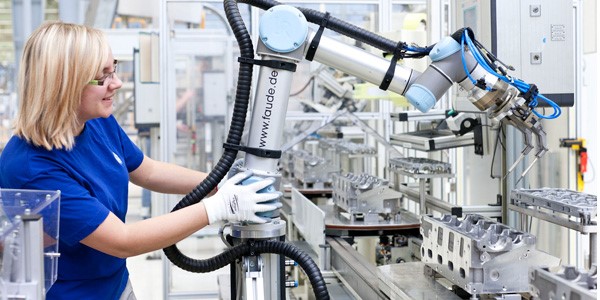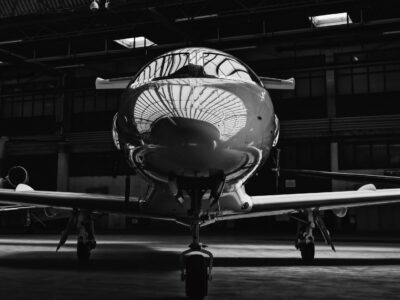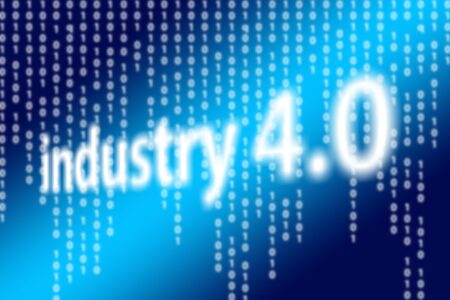
What are the implications of technological developments for workers and what should the relationship between the two sides be like? Focus on the human factor in the current and future industrial sector.
Advances in the industry are constant due to the momentum of technological developments, which are deeply transforming society. But this is not a process that has come as a surprise. Since the first Industrial Revolution, people and organisations have understood that the advance of technology and its implementation translates into an increase in the effectiveness and efficiency of production processes. If we go back to the past, this was the case with the application of the steam engine or the use of electricity as a source of energy and continues to be the case today with the latest revolution, under the name of Industry 4.0.
This new nomenclature was accompanied by the words “smart”, “real-time”, “integrated”, “collaborative” or “connected”, among others, combining elements such as IoT, Artificial Intelligence, Big Data, Advanced Analytics, robotics, computing power or the increasingly widespread 5G. All this for the sake of automation and data-driven knowledge must be at the service of decision-making. This is achieved through processes such as Operational Intelligence or Business Intelligence, which, using models, achieve the most accurate decisions, to the detriment of the traditional approach, where the level of knowledge for good decision-making is limited by the natural conditions of human beings.
This new approach has transformed and continues to transform the industrial sector, where more and more organisations are using automated and digitised systems, obtaining important competitive advantages in the form of experiences that show the savings and improvements in production offered, as well as being able to tackle current issues such as energy-saving and natural resource management.
From another perspective, automation also has some impact on human resources. Workers no longer have to deal with repetitive and tedious tasks. However, while bringing such advantages to workers, they also suffer from a displacement of their tasks to the extent that no small percentage of jobs are threatened.
THE ROLE OF HUMAN BEINGS IN THE INDUSTRIAL SECTOR
The emphasis on automation, often based on minimising human intervention, has sparked debate on what the role of humans should be in industry today and in the future.
The current technological transformation brings with it the need for “human-machine” interaction, in which the focus is on the human party enabling the execution of processes with economic and commercial advantages while promoting safety, sustainability and productivity.
This approach proposes a relationship where technology does not replace workers but complements them in such a way that it is directed, controlled and supervised by experts, in whom the ultimate decision lies. Therefore, the benefits of each of the actors are combined, that is, the cognitive skills and common sense of the human being with the speed, capacity and technological precision, thus achieving results that, individually, could not be achieved by any of them. So, although technology allows for the absorption of repetitive, difficult or even dangerous tasks, in many cases for humans, it should not replace them.

HUMAN AND TECHNOLOGICAL ADAPTATION
Obviously, for the human-machine pairing to maximise the benefits that result from it, there must be a process of adaptation on both sides.
Thanks to machines, workers have a greater amount of time to perform those tasks that only human logic can perform. These are tasks of supervision of automatic systems, decision making and creative and innovative activities to improve the quality of production processes. In other words, workers change their tasks for those of a higher level and responsibility, which leads to an increase in human empowerment and requires more trained and specialised profiles. In this way, some traditional jobs will be altered, but in no way in the form of their destruction, but rather in the form of a restructuring to facilitate it.
Likewise, technology must be appropriate to allow intuitive and easy interaction for workers. For example, the term “cobot” is becoming less and less exotic. These are robots created to physically interact with humans. So while traditional industrial machinery works in a massive and often fixed position, cobots are compact and smaller in volume, making them easier to move around. They are generally used for manual, repetitive and high-precision work, bringing higher quality to human activities. Furthermore, another important factor is that thanks to the inclusion of sensors, cobots can determine risky situations and, for example, stop their operation, thus promoting worker safety in tasks that may pose a risk to their physical integrity.

Another element of digital and technological transformation is Advanced Analytics. This, using data obtained from various sources (increasing thanks to IoT elements) and through advanced methods of descriptive, predictive and prescriptive analysis, provides significant improvements in decision-making and process automation. You can find some of these methods applied in the industry here, which show the economic and operational impact obtained with the implementation of this kind of technique. Again, the strength of the human-machine interface is fostered with software capable of handling, displaying and enabling easy and intuitive interaction of information with the responsible experts.
OTHER IMPLICATIONS TODAY
On the other hand, there are some characteristics related to this approach that places the human being at the centre, which should guide the decisions that accompany them, and which are the result of current social needs and trends.
One of them is to prioritise both sustainability and environmental care. This is addressed, among other technologies, with advanced analytical techniques, capable of proposing solutions that maximise the use of resources and minimise the consumption of raw materials and the emission of waste (for example, using a tool for calculating optimal routes, it is possible to reduce the number of vehicles required with maximum use of the same, which translates into operational savings, the better quality of service and lower CO2 emissions and pollution associated with the manufacture of the vehicles themselves).
In addition, customers now have access to an infinite number of products. Extremely fast and highly accurate production lines are capable of mass-producing large numbers of products. However, customer demand for customised and personalised products is growing dramatically, so the traditional approach of mass production does not match with the increased individualisation of the products demanded. This is why, once again, the interaction between machines and humans is manifested by the former’s need for the creativity and ideas for product customisation of the latter, who will be able to concentrate on these tasks by freeing themselves from those absorbed by technology.
In short, humans and machines will have to be in harmony to improve processes, be more efficient and care for the environment, but this process must always leave the final decision making and creativity to humans and the hardest and most dangerous tasks and calculations to machines.


